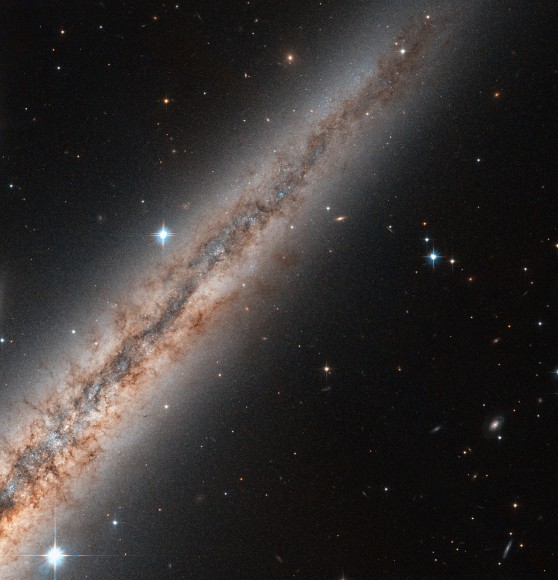Like the blade of a magical weapon from a fantasy tale, the northern edge of spiral galaxy NGC 891 is captured by the Hubble Space Telescope, glowing with the light of billions of stars and interwoven with dark clouds of dust and cold gas.
 In reality this cosmic blade is enormous. About the same size as our galaxy, NGC 891 is approximately 100,000 light-years in diameter, making the section visible here around 40,000 light-years in length.
In reality this cosmic blade is enormous. About the same size as our galaxy, NGC 891 is approximately 100,000 light-years in diameter, making the section visible here around 40,000 light-years in length.
Unlike the Milky Way, however, NGC 891 is unbarred and also exhibits many more filaments of dark gas and dust. Astronomers suggest that these are the result of star formation and supernovae, both of which can expel vast amounts of interstellar material far out into space.
The few bright stars in the foreground are located in our own galaxy.
NGC 891 is located in the constellation Andromeda and lies about 30 million light-years away… that means the light captured by Hubble’s Advanced Camera for Surveys to create the image above began its journey 35 million years after the asteroid impact that led to the extinction of the dinosaurs, and about 26 million years before our ancient African ancestors began walking upright. That may sound like a long trip but, as Douglas Adams so eloquently said, “that’s just peanuts to space!”